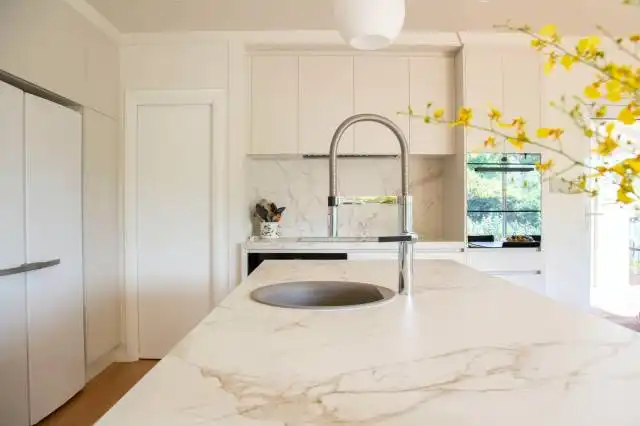Start a Tile Business
Unleashing Your Creativity in the Vibrant World of Tiles
| Updated


TILE BUSINESS
Jump into the fascinating world of tile businesses! Here, your creativity will run wild as you design, produce, and sell a variety of tiles to customers seeking to add a touch of elegance to their homes or offices. It's like you're an artist with clay, creating beautiful mosaics for someone's castle! You would be manufacturing wall and floor tiles, bathroom and kitchen tiles, to name a few, making any dull space come alive through intricate patterns and bright pigments.
Jump to Business Plan
RELATED BUSINESS IDEAS
Browse ALL Home Improvement & Repair Solutions Business Ideas
Discover Your Perfect Domain
Unlock the door to your online success with our hand-picked selection of premium domain names. Whether you're starting a new venture or rebranding an existing one, the right domain can set the tone for your digital presence. Browse through our curated list, each with its unique potential to enhance your brand's visibility and credibility.
TILE MINI BUSINESS PLAN
This a quick reality check to help you identify the strengths and weaknesses of your business concept before you dive in.
Business Idea: Tile Business
Selling high-quality tiles for residential and commercial projects.
Expected Percent Margin:
- Gross Margin: Typically 30-35%
- Net Profit Margin: Typically between 5-10%
Earnings Expectations:
- Daily Earnings: $150 - $300
- Weekly Earnings: $1050 - $2100
- Monthly Earnings: $4500 - $9000
- Annual Earnings: $54,000 - $108,000
Actions to Hit Those Numbers:
Inventory Management:
- Initial Investment: Start with $30,000-$75,000 for quality and varied tiles.
- Supplier Relationship: Foster connections with 5-7 reliable suppliers.
Marketing and Customer Acquisition:
- Social Media: Post sample project images, and latest tile designs 2-3 times per week on popular platforms.
- Local Advertising: Allocate at least $650 a month for local print media and community sponsorships.
Sales and Customer Experience:
- Staffing: Employ at least 2-3 people, knowledgeable about tile types, uses, and installation.
- Showroom Design: A visually appealing tile display to excite and entice customers.
Cost Control:
- Rent: Choose a location where the rent is less than 10% of forecasted monthly sales.
- Utilities and Maintenance: Budget approximately $400-$600 each month
Business Operations:
- Operational Hours: Ensure business operations 6 days a week, for at least 8 hours a day.
- Transaction Volume: Aim for about 10-20 sales per day with an average sale price of approx. $75-$150.
Note: These figures are general estimates and can differ significantly based on your location, the economy, and unique business strategies. Always engage a qualified financial advisor for personal advice.
NOT WHAT YOU HAD IN MIND? Here are more ideas



Browse ALL Home Improvement & Repair Solutions Business Ideas
Grab Your Business Website Name
Before you get caught up in the whirlwind of setting up your business, invest in a domain name. It's a small but significant step that lays the foundation for your brand and makes it easier for customers to find and trust you. Just like you wouldn't build a house without securing the land first, don't build a business without securing your domain name.
"Why? Can't that wait?" Here's why it shouldn't
Step 1: Determine if a Tile Business is the Right Endeavor
Breakdown of Startup Expenses
Before starting a tile business, it is important to understand the startup costs associated with the business. This includes the cost of the tile itself, the cost of any tools and equipment needed to install the tile, the cost of any permits or licenses necessary to operate the business, and the cost of any advertising or marketing materials. It is also important to consider the cost of any employees or subcontractors that may be needed to help with the installation of the tile.
Breakdown of Ongoing Expenses
After the initial startup costs have been considered, it is important to understand the ongoing expenses associated with running a tile business. This includes the cost of any materials needed to complete tile installations, the cost of any tools and equipment needed to maintain the business, the cost of any insurance needed to protect the business, and the cost of any taxes or fees associated with running the business.
Examples of Ways to Make Money
There are a variety of ways to make money in a tile business. This includes charging for the installation of tile, charging for the materials used in the installation, and offering additional services such as grouting, sealing, or repairs. Additionally, the business can offer discounts for bulk orders or offer special promotions to attract new customers. It is also possible to make money by selling tile directly to customers or wholesalers.
Step 2: Name the Business
When it comes to naming a business, it is important to choose a name that is memorable and unique. It should also be easy to pronounce and spell. Additionally, it should be relevant to the type of business that is being started. For example, if the business is a tile business, the name should include something related to tiles. It is also important to make sure the name is not already taken by another business. To do this, it is necessary to check with the local chamber of commerce and the U.S. Patent and Trademark Office. Additionally, it is a good idea to check with the local newspaper to make sure the name is not already being used.
Once a name has been chosen, it is important to make sure it is properly registered with the local government. This will ensure that the business is legally recognized and can operate without any legal issues. Additionally, it is important to make sure the name is trademarked to protect the business from any potential infringement. Finally, the name should be used in all marketing materials, including business cards, websites, and social media accounts. This will help to ensure that the business is recognizable and will help to build brand recognition.
Step 3: Obtain Licenses and Permits
The third step in starting a tile business is to obtain the necessary licenses and permits. Depending on the state, the type of license and permit required may vary. Generally, a business license and a seller's permit are required. Additionally, a zoning permit may be necessary if the business will be operating out of a physical location. It is important to do research and contact the local government to determine what licenses and permits are necessary. Furthermore, it is important to make sure that the business is compliant with all applicable local, state, and federal laws. Additionally, it is important to make sure that the business is insured to protect against any potential liabilities. Finally, it is important to make sure that all necessary paperwork is filed with the appropriate government agency.
Step 4: Secure Financing
Securing financing is an important step in starting a tile business. It is important to have enough funds to cover the cost of materials, labor, and other expenses. There are several ways to secure financing for a tile business. One option is to apply for a loan from a bank or other financial institution. This can be a good option if you have a good credit score and a solid business plan. Another option is to look for investors who are willing to provide capital in exchange for a share of the business. Finally, you could also look into grants and other forms of government funding that may be available for small businesses. All of these options should be explored before making a decision. It is important to have a clear understanding of the terms and conditions of any loan or investment before signing any documents.
Step 5: Find a Location
Finding the right location for a tile business is essential. The location should be easily accessible to customers, have plenty of parking, and be in a safe area. Additionally, the space should be large enough to store inventory, have a showroom, and have an area for installation. It is also important to consider the cost of rent, utilities, and other expenses associated with the location. The location should also be in an area that is convenient for customers to visit and that will attract potential customers. Additionally, it is important to consider the local zoning laws and regulations that may affect the business. Finally, it is important to research the competition in the area and make sure that there is enough demand for the business.
Step 6: Purchase Equipment and Supplies
Once the business is registered, the next step is to purchase the necessary equipment and supplies. This includes items such as tile cutters, tile saws, tile nippers, tile spacers, tile grout, tile sealers, and other tools and materials. It is important to research the different types of tile and supplies available, and to purchase the best quality items that fit within the budget. Additionally, it is important to purchase enough supplies to cover the estimated demand for the business.
Step 7: Market the Business
Once the business is registered and the necessary equipment and supplies are purchased, it is time to start marketing the business. This can be done through a variety of methods, such as creating a website, advertising in local newspapers, and creating social media accounts. Additionally, it is important to create a logo and brand identity for the business, as this will help customers recognize the business. It is also important to create a portfolio of completed projects, as this will help to attract customers.
Step 8: Hire Employees
Once the business is established and the necessary equipment and supplies are purchased, it is time to hire employees. This includes hiring tile installers, tile finishers, and other professionals who can help with the installation and finishing of tile projects. It is important to research the local labor market and to hire employees who have the necessary skills and experience. Additionally, it is important to create a safe and comfortable working environment for employees.
Step 9: Track Finances
The final step in starting a tile business is to track the finances. This includes tracking income and expenses, as well as creating a budget for the business. It is important to track all income and expenses, as this will help to identify areas where the business can save money. Additionally, it is important to create a budget for the business, as this will help to ensure that the business is able to stay within its financial means.
Step 7: Hire Employees
Hiring employees is a crucial step in starting a tile business. It is important to find the right people to help grow the business. Depending on the size of the business, the number of employees needed may vary. When hiring employees, it is important to consider the skills and experience they bring to the table. It is also important to consider the cost of hiring and training employees. It is important to have a clear job description and a competitive salary for each position. Additionally, it is important to provide employee benefits such as health insurance, vacation time, and retirement plans. This will help attract and retain the best employees. It is also important to create a safe and comfortable work environment. This includes providing the necessary safety equipment, training, and resources. Finally, it is important to have a clear set of policies and procedures in place to ensure that employees are aware of their responsibilities and expectations.
Step 8: Market the Business
Marketing the business is an important step in launching a successful tile business. There are many different ways to market a business, including online, print, and radio advertising. Additionally, it is important to create a website and social media accounts to help promote the business. Additionally, attending trade shows, networking events, and conferences can be a great way to meet potential customers and get the word out about the business. It is also important to create a customer loyalty program to reward customers for their loyalty and encourage them to return to the business. Finally, creating a referral program can be a great way to incentivize customers to refer their friends and family to the business.
Step 9: Monitor and Adjust Business Plan
Monitoring and adjusting the business plan is an important step in the process of starting a tile business. It is important to track the progress of the business and make changes to the plan as needed. This can include changes to the budget, marketing strategies, pricing, and other aspects of the business. It is also important to evaluate the success of the business and make changes to the plan accordingly.
To monitor and adjust the business plan, it is important to review the financials of the business on a regular basis. This includes tracking the income and expenses of the business, as well as evaluating the success of the marketing efforts. It is also important to review customer feedback and make changes to the plan as needed.
It is also important to review the competition and make changes to the plan accordingly. This includes researching the competition and understanding their pricing, marketing strategies, and other aspects of their business. It is also important to review customer feedback and make changes to the plan as needed.
In addition to monitoring and adjusting the business plan, it is important to review the goals and objectives of the business. This includes evaluating the progress of the business and making changes to the plan as needed. This can include changes to the budget, marketing strategies, pricing, and other aspects of the business.
Finally, it is important to review the progress of the business and make changes to the plan as needed. This includes evaluating the success of the marketing efforts, customer feedback, and the competition. It is also important to review the goals and objectives of the business and make changes to the plan accordingly. By monitoring and adjusting the business plan, it is possible to ensure that the business is on track to reach its goals and objectives.
EXPLORE MORE CATEGORIES
Browse ALL Business Idea Categories
TAKE THE NEXT STEPS









